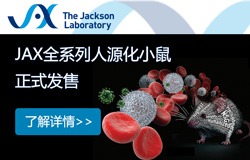玉米Proline responding 1(pro1)突變在蛋白合成和細胞周期調(diào)控中起到關(guān)鍵作用
上海大學生命科學學院、上海市能源作物育種及應(yīng)用重點實驗室的研究人員證實,玉米Pro1基因(Zm P5CS2)的突變造成了突變體細胞中脯氨酸(proline)合成受阻,從而導致proline積累的減少。突變體中proline的缺乏引起了相應(yīng)的轉(zhuǎn)運RNA(tRNApro AGG)空載形式(uncharged tRNApro AGG)的增多,從而激活了細胞中的GCN2激酶,該激酶通過磷酸化真核生物翻譯起始因子eIF2α從而抑制了細胞中蛋白合成的普遍抑制;另一方面,突變體中proline的缺乏也引起了細胞周期相關(guān)基因、DNA復制相關(guān)基因以及細胞增殖相關(guān)基因表達的下調(diào),從而抑制了細胞周期從G1到S期的轉(zhuǎn)換。這一成果2014年6月20日在線發(fā)表于“The Plant Cell”(《植物細胞》)雜志上。
上海大學生命科學學院、上海市能源作物育種及應(yīng)用重點實驗室的王剛副教授和宋任濤教授分別是本文的第一作者和通訊作者。
背景介紹
玉米(Zea mays L.)既是重要的糧食和飼料作物,又是禾本科中一個重要的分子生物學與遺傳學研究的模式植物。在玉米中,一系列能夠引起玉米籽粒出現(xiàn)粉質(zhì)胚乳表型的opaque和floury突變基因都已經(jīng)被定位在玉米染色體的相應(yīng)區(qū)域。已經(jīng)克隆的opaque和floury突變基因的功能分析部分解析了醇溶蛋白合成調(diào)控的分子機理以及醇溶蛋白合成與籽粒opaque和floury表型形成的關(guān)系。已有研究表明,玉米中大多數(shù)的opaque和floury基因(如o2, fl2, Mc和De-B30)通過影響醇溶蛋白的調(diào)控基因或者結(jié)構(gòu)基因從而調(diào)控了醇溶蛋白的合成。相應(yīng)地,通過RNA干擾(RNA interference, RNAi)的方式直接下調(diào)醇溶蛋白結(jié)構(gòu)基因(α-, β-, γ-或δ-醇溶蛋白基因)的表達均可以引起籽粒形成opaque和floury表型。然而,玉米中諸如o1, o5和fl1這些突變體籽粒中醇溶蛋白的含量并未發(fā)生明顯地改變,這些突變體opaque和floury表型主要是由蛋白體形成和包裝的異常引起的。Motto等(1996)認為還存在其它的調(diào)控機制,如氨基酸供給的異常也可能通過影響醇溶蛋白的合成從而造成opaque突變表型。近年來克隆的Mto140和O7基因的功能分析表明,氨基酸供給的限制也會引起醇溶蛋白合成的抑制,但是調(diào)控機理尚不明確。
文章亮點
脯氨酸雖然在多數(shù)生物體內(nèi)并非必需氨基酸,但其在機體內(nèi),尤其是高等植物體內(nèi)具有極為重要的生理功能。之前的研究認為,脯氨酸在高等植物的抗脅迫作用中扮演著極為重要的角色。近年以來,越來越多的研究表明,脯氨酸在體內(nèi)可以作為一種信號分子而對高等植物的生長和發(fā)育進行調(diào)節(jié)。脯氨酸作為細胞內(nèi)的游離氨基酸和蛋白合成的成分,在細胞代謝和植物生長發(fā)育中扮演著關(guān)鍵的角色,然而其作為信號分子的調(diào)控機制尚不明確。Pro1突變基因的克隆和功能分析解析了脯氨酸在植物生長發(fā)育過程中對蛋白合成和細胞周期G1到S期轉(zhuǎn)換的調(diào)控機制。
結(jié)果分析
pro1突變體造成粉質(zhì)胚乳和苗期致死表型
1975年,Giuseppe Gavazzi等人描述了一種條件致死型的,由單基因控制的玉米籽粒的隱性突變體。純合的pro1突變籽粒的外觀呈現(xiàn)出發(fā)育不良、皺縮以及不透光的opaque表型(Figure 1A,B,C,D)以及淀粉、油脂和蛋白合成的減少(Figure 1G,H,I)。若將突變籽粒進行種植,與正常植株相比較,pro1突變體幼苗的植株矮小,株高只有同一時期野生型株高的20%左右,根長只有同一時期野生型株高的25%左右(Figure 1E,F,J)。此外,pro1突變體其幼苗一般在發(fā)育到兩葉期時生長受到嚴重抑制,繼而發(fā)生壞死導致死亡。在加入外源L-脯氨酸的培養(yǎng)基上進行培養(yǎng)時,突變體幼苗可以回復到野生型表型,越過兩葉期繼續(xù)生長。因此,研究人員將這個新發(fā)現(xiàn)的突變體命名為Pro1突變。
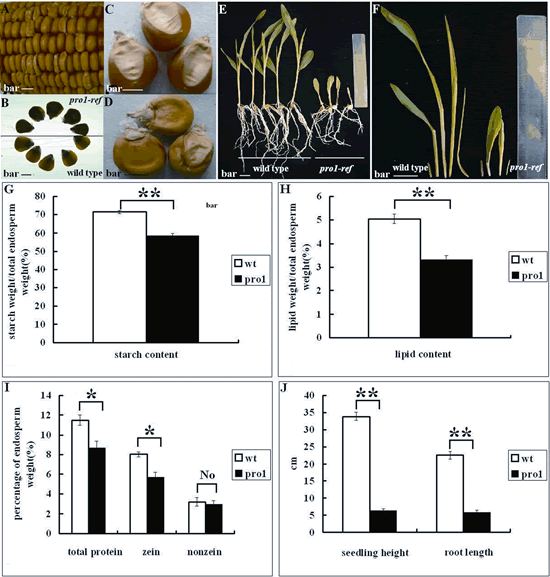
Figure 1 Phenotypic Features of Maize prol1 Mutants.
(A) F2 ear of pro1-ref × Chang 7-2. bar: 1cm.
(B) Wild type and mutant kernels randomly selected from F2 ears of pro1-ref × Chang 7-2 viewed on a light box. bar: 1cm.
(C) Wild type and (D) pro1-ref kernels. bar: 1cm.
(E) and (F) Phenotype of wild type and pro1-ref seedlings (14 DAG). bar: 2cm.
(G), (H) and (I) comparison of starch, lipid and protein (total protein, zein and nonzein) accumulation in wild type and pro1-ref kernels. For each sample, three independent biological replicates were performed. Bars represent average values ± SD, n=3 replicates (No refers to P > 0.05, * refers to P < 0.05, ** refers to P < 0.01, Student’s test), wt, wild type; pro1, pro1-ref.
(J) Comparison of seedling height and root length of wild type and pro1-ref. Bars represent average values ± SD (n=20 seedlings per genotype, ** refers to P < 0.01, Student’s test). wt, wild type; pro1, pro1-ref.
Pro1基因編碼一個△1-吡咯啉-5-羧酸合成酶(P5CS)
對玉米經(jīng)典突變pro1基因進行圖位克隆發(fā)現(xiàn),玉米Pro1基因編碼一個△1-吡咯啉-5-羧酸合成酶(P5CS) (Figure 2A),它是催化以谷氨酸為前體合成脯氨酸過程中的限速酶(Figure 2B, C, D, E)。Pro1基因功能的喪失,造成突變體中脯氨酸合成與積累的下降。
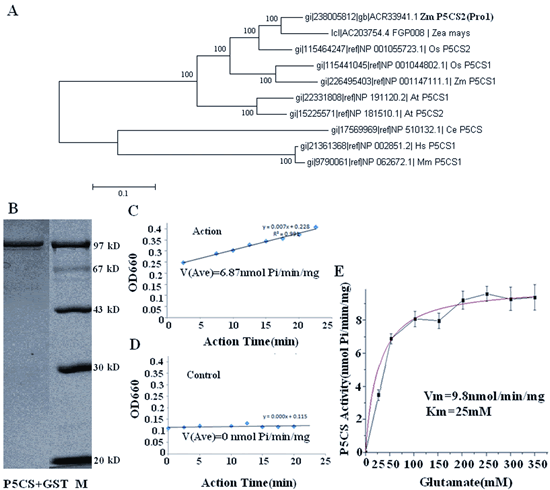
Figure 2 Phylogenetic Analysis of Pro1 and Biochemical Assay of Recombinant P5CS Protein.
(A) Phylogenetic relationships of Pro1 (Zm P5CS) and its homologs.
Maize Pro1 and identified P5CS in rice (monocot) and Arabidopsis (dicot) plants were aligned by MUSCLE method in MEGA 5.2 software package. The phylogenetic tree was constructed using MEGA 5.2, and P5CS of Caenorhabditis elegans, Homo sapiens, and Mus musculus were used as outgroups (see Methods). The numbers at the nodes (100) represent the percentage of 1,000 bootstraps. Zm: Zea mays; Os: Orya sativa; At: Arabidopsis thaliana; Ce: Caenorhabditis elegans; Hs: Homo sapiens; Mm: Mus musculus.
(B) SDS-PAGE gel of purified GST-P5CS protein stained with Coomassie blue. Left lane, GST- P5CS; right lane, molecular weight markers.
(C) and (D) Standard curve and its control of Pi determination based on a malachite green colorimetric assay
(E) Kinetic analysis of P5CS was performed using glutamate concentrations from 0 to 350 mM. Km and Vmax were determined from nonlinear regression to the Michaelis-Menten equation for concentrations of glutamate up to 350 mM from five replicate experiments. For each sample, five independent biological replicates were performed. Error bars represent SD.
Proline1基因功能的減弱/喪失抑制了玉米籽粒和幼苗中L-脯氨酸的合成
Pro1基因(Zm P5CS2)功能的減弱/喪失可能抑制了玉米中L-脯氨酸的合成。通過對玉米成熟籽粒進行總的氨基酸和游離氨基酸分析表明,與野生型相比,pro1-ref突變體成熟籽粒中總的L-脯氨酸的相對含量下降了35.9%(Figure 3A),總的游離L-脯氨酸的含量下降了56.0%(Figure 3B)。苗期(14DAG)氨基酸分析表明,與野生型相比,pro1-ref幼苗中總的L-脯氨酸的相對含量下降了45.2%(Figure 3C),總的游離L-脯氨酸的含量下降了100.0%(Figure 3D)。由此表明,Proline1基因功能的減弱/喪失抑制了玉米籽粒和幼苗中L-脯氨酸的合成。
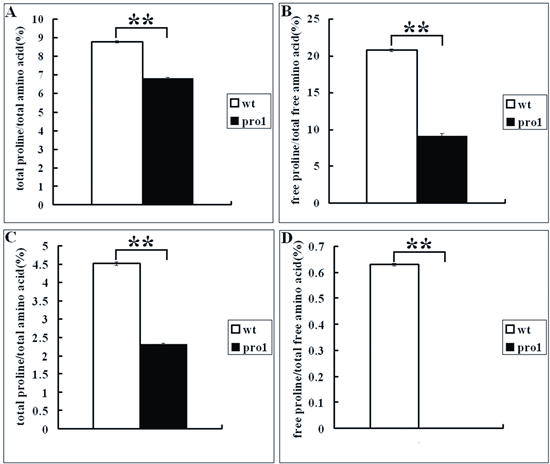
Figure 3 Analysis of Total and Free Proline from Mature Endosperms and 14 DAG Seedling of Wild Type and pro1-ref.
(A) and (B) Comparison of total and free proline from mature endosperm of wild type and pro1-ref . wt, wild type; pro1, pro1-ref.
(C) and (D) Comparison of total and free proline from 14 DAG seedlings of wild type and pro1-ref. wt, wild type; pro1, pro1-ref.
For each sample, three independent biological replicates were performed. Bars represent average values ± SD, n=3 replicates (** refers to P < 0.01, Student’s test).
pro1突變體中脯氨酸缺乏引起的空載tRNApro AGG累積從而造成了eIF2α)的磷酸化
脯氨酸的缺乏造成pro1突變體細胞中空載tRNApro AGG累積,由此引發(fā)真核生物翻譯起始因子2的α亞基(eIF2α)磷酸化(Figure 4A, B, C, D, and E),造成突變體中蛋白合成的普遍下降。
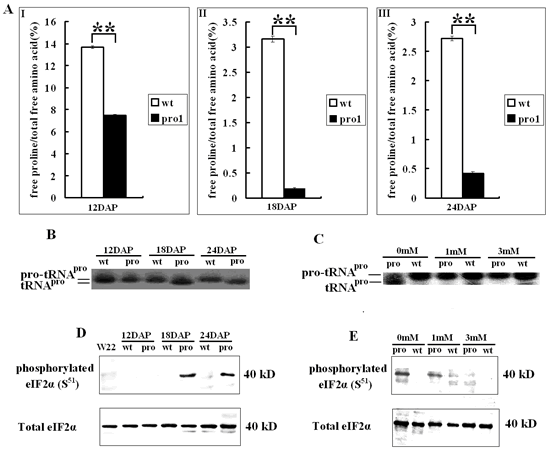
Figure 4 Uncharged tRNApro Accumulation Caused by Proline Deficiency Triggers the Phosphorylation of eIF2α
(A) Free proline content analysis of 12 DAP (I), 18 DAP (II), and 24 DAP (III) endosperm from wild type and pro1-ref. For each sample, three independent biological replicates were performed. Bars represent average values ± SD, n=3 replicates (** refers to P < 0.01, Student’s test). wt, wild type; pro, pro1-ref.
(B) Northern Blot analysis of charged and uncharged tRNApro accumulation in developing endosperm. wt, wild type; pro, pro1-ref.
(C) Northern Blot analysis of charged and uncharged tRNApro accumulation in 14 DAG seedlings of wild type and pro1-ref cultivated with 0 mM, 1 mM and 3 mM L-proline. wt, wild type; pro, pro1-ref.
(D) Immunoblot analysis of eIF2α phosphorylation during kernel development. wt, wild type; pro, pro1-ref.
(E) Immunoblot analysis of eIF2α phosphorylation in 14 DAG seedlings of wild type and pro1-ref cultivated with 0 mM, 1 mM and 3 mM L-proline. wt, wild type; pro, pro1-ref.
pro1突變體中脯氨酸缺乏引起細胞周期G1到S期轉(zhuǎn)換的抑制
Pro1基因作為玉米中合成脯氨酸過程的關(guān)鍵酶,對玉米生理生化的影響是多方面且重要的。RNA-seq (Figure 5)證實pro1突變體中脯氨酸的缺乏引起了細胞周期相關(guān)基因、DNA復制相關(guān)基因以及細胞增殖相關(guān)基因表達的下調(diào),體外添加脯氨酸后這些基因表達回復至野生型水平(Figure 6A、B)。脯氨酸作為一種重要氨基酸,它的信號分子作用會涉及細胞內(nèi)部多種多樣的生理平衡和生化過程:通過GCN2,mTOR等與氨基酸缺乏偶合的調(diào)控環(huán)節(jié),可改變細胞原有的基因表達模式,涉及蛋白合成與細胞周期等生命活動,誘導細胞進入修復,停滯或凋亡的模式。
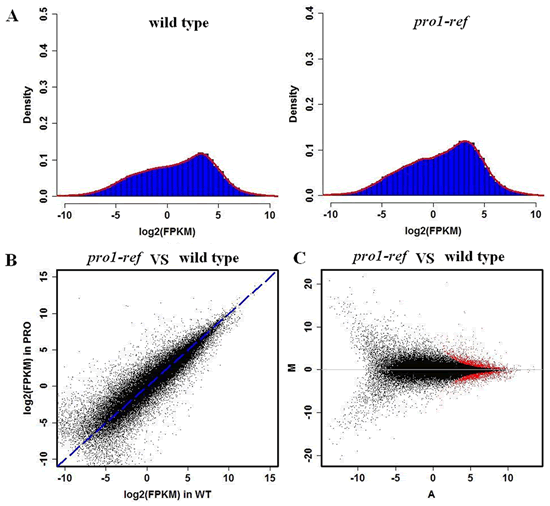
Figure 5 Gene Expression Profiling Graphs of Wild type and pro1-ref.
(A) Graphs show log2 ratios of gene expression in 14 DAG seedlings of wild type and pro1-ref.
(B) Graphs show a scatter plot comparing gene expression in 14 DAG seedlings of wild type and pro1-ref.
(C) Graphs show genes identified as differentially expressed by Fisher’s test (red dots).
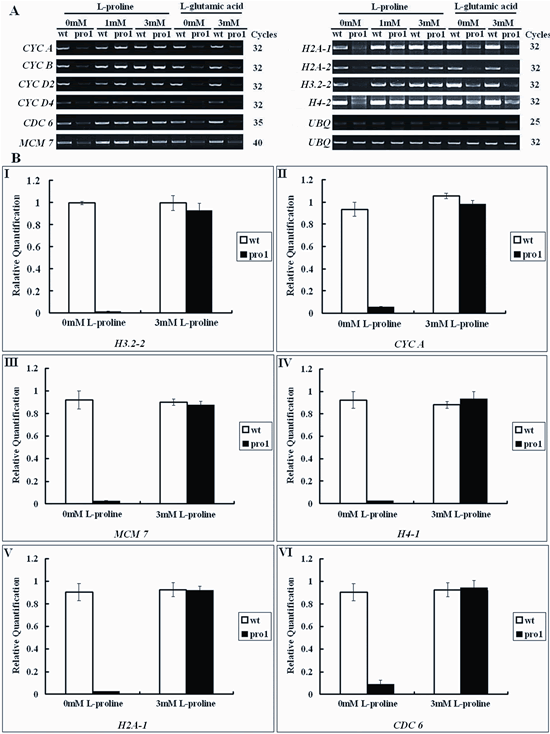
Figure 6 Cell Cycle-Related Gene Expression Analysis in Wild type and pro1-ref.
(A) RNA expression of cell cycle-related genes based on RT-PCR analysis of 14 DAG wild type and pro1-ref seedlings cultivated in 1/2 MS culture medium supplemented with various concentrations of L-proline and L-glutamate. wt, wild type; pro1, pro1-ref.
(B) Expression of various cell cycle-related genes in 14 DAG wild type and pro1-ref seedlings cultivated in 1/2 MS culture medium supplemented with various concentrations of L-proline. Ubiquitin was used as an internal control. For each sample, three technical and two independent biological replicates were performed. Error bars represent SD. wt, wild type; pro1, pro1-ref.
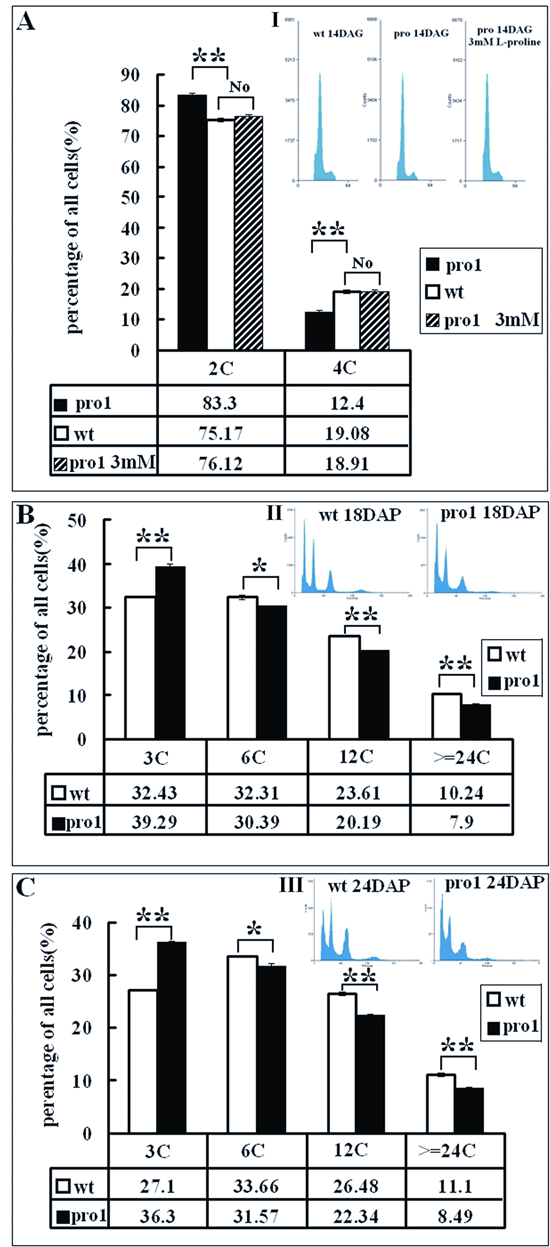
Figure 7 Evidence of Aberrant Cell Cycle in pro1-ref.
(A) Cell cycle analysis of 14 DAG seedlings of wild type, pro1-ref and pro1-ref cultivated on medium supplemented with 3 mM L-proline. wt, wild type; pro1, pro1-ref.
(B) Cell cycle analysis of 18 DAP endosperms of wild type and pro1-ref. wt, wild type; pro1, pro1-ref.
(C) Cell cycle analysis of 24 DAP endosperms of wild type and pro1-ref. wt, wild type; pro1, pro1-ref.
The small graphs (I, II, and III) inserted in A, B, and C respectively are the cell cycle diagrams of 14 DAG seedlings, 18 and 24 DAP endosperms analyzed by flow cytometry. The 2C and 4C are DNA contents of the nuclei at stage G1 and S phase of 14 DAG seedlings respectively. The 3C and 6C are DNA contents of the nuclei at stage G1 and S phase of 18 and 24 DAP endosperms. The 12C and >= 24C are DNA contents of endoreduplicated nuclei at stage S phase of 18 and 24 DAP endosperms. For each sample, three independent biological replicates were performed. Bars represent average values ± SD, n=3 replicates (No refers to P > 0.05, * refers to P < 0.05, ** refers to P < 0.01, Student’s test).
用流式細胞儀進行細胞周期分析表明,與野生型相比,pro1-ref幼苗的細胞周期受到抑制,表現(xiàn)為4C DNA減少,相應(yīng)的2C DNA增多,可能DNA擴增受到抑制(Figure 7A)。將pro1-ref突變體與野生型幼苗在萌發(fā)后移至含3mM的L-脯氨酸中培養(yǎng)9-10天,收取整苗進行細胞周期分析,結(jié)果表明,在3mM的L-脯氨酸中培養(yǎng)的pro1-ref突變體幼苗細胞周期基本恢復至野生型水平(Figure 7A)。籽粒胚乳細胞的細胞周期分析進一步證實了G1到S期轉(zhuǎn)換的抑制(Figure 7B和C)。這些結(jié)果表明,pro1-ref突變體中L-脯氨酸的缺乏抑制了細胞周期,外源添加L-脯氨酸可以促進pro1-ref突變體的細胞周期恢復正常。
Pro1基因功能的解析,有助于了解脯氨酸在植物生長與發(fā)育中的調(diào)控作用機理,進而更全面地理解它在細胞生命活動過程中的重要作用,使人們對脯氨酸的功能有了新的認識。
原文:
Proline responding1 Plays a Critical Role in Regulating General Protein Synthesis and the Cell Cycle in Maize
- 非負矩陣分解NMF算法助力單細胞轉(zhuǎn)錄組數(shù)據(jù)分析
- 深度神經(jīng)網(wǎng)絡(luò)助力對腫瘤細胞鑒定及空間惡性區(qū)域的識別
- 腫瘤純度和倍性評估工具Sequenza的安裝和使用方法
- 單細胞高級分析百篇文獻結(jié)果展示匯總(六)
- 單細胞高級分析百篇文獻結(jié)果展示匯總(五)
- 使用SBC ToolBox 單細胞抖動圖模塊美化差異marker基因
- SBC ToolBox在Small RNA-seq定量數(shù)據(jù)分析中的應(yīng)用(下)
- SBC ToolBox在Small RNA-seq定量數(shù)據(jù)分析中的應(yīng)用(上)
Copyright(C) 1998-2025 生物器材網(wǎng) 電話:021-64166852;13621656896 E-mail:[email protected]





